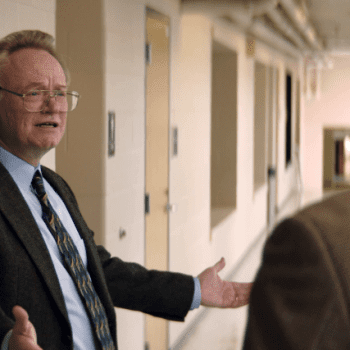First, a Variety story from three weeks ago:
In Cannes this year, Martin Scorsese talked about the importance of preserving such films as Ahmed El Maanouni’s 1981 Moroccan music documentary “Trances.”
But he didn’t mention that his own “Taxi Driver” is deteriorating.
Although the 1976 film is part of Sony’s vast library, few are rallying to its aid. The myriad film-preservation orgs throw their money and muscle behind titles that are indie, foreign or obscure. It’s assumed Hollywood’s majors will take care of their own films. In fact, they don’t.
One Paramount veteran compared the studio’s vault to a teenager’s chaotic bedroom. In fact, a visitor accidentally stepped on the negative of “Rosemary’s Baby,” which was unspooled on the floor.
With constant pressure on the bottom line, studio execs often lack the funds — or interest — to make sure their heritage is being cared for properly. Digital technology, which was touted as the salvation of film, has turned out to be deeply flawed, deteriorating faster than anyone imagined.
Movies “get lost in the wilderness unless (studios) pay attention to them,” says Ridley Scott, who found the digital version of his 1982 “Blade Runner” in fragile condition. “We discovered inadvertently that a lot of digital stuff was fading quicker than expected. We think it’s safe forever on disc, but, in fact, it was actually fading.”
Roger Mayer, a former MGM honcho who’s now chairman of the National Film Preservation Foundation, estimates each studio spends $5 million to $10 million a year to fund preservation or restoration programs — a sum that wouldn’t even cover the marketing costs of a low-budget comedy. . . .
Things get scarier from there. And now for a story that appeared in yesterday’s New York Times:
But then came digital. And suddenly the film industry is wrestling again with the possibility that its most precious assets, the pictures, aren’t as durable as they used to be.
The problem became public, but just barely, last month, when the science and technology council of the Academy of Motion Picture Arts and Sciences released the results of a yearlong study of digital archiving in the movie business. Titled “The Digital Dilemma,” the council’s report surfaced just as Hollywood’s writers began their walkout. Busy walking, or dodging, the picket lines, industry types largely missed the report’s startling bottom line: To store a digital master record of a movie costs about $12,514 a year, versus the $1,059 it costs to keep a conventional film master.
Much worse, to keep the enormous swarm of data produced when a picture is “born digital” — that is, produced using all-electronic processes, rather than relying wholly or partially on film — pushes the cost of preservation to $208,569 a year, vastly higher than the $486 it costs to toss the equivalent camera negatives, audio recordings, on-set photographs and annotated scripts of an all-film production into the cold-storage vault.
All of this may seem counterintuitive. After all, digital magic is supposed to make information of all kinds more available, not less. But ubiquity, it turns out, is not the same as permanence.
In a telephone interview earlier this month, Milton Shefter, a longtime film preservationist who helped prepare the academy’s report, said the problems associated with digital movie storage, if not addressed, could point the industry “back to the early days, when they showed a picture for a week or two, and it was thrown away.” . . .
So perhaps copyright violation is really the least of anyone’s worries. Either the movies simply won’t exist to be pirated in the future, or the pirates will have inadvertently filled the gaps in the studios’ own archives. So democratize the process, I say.












